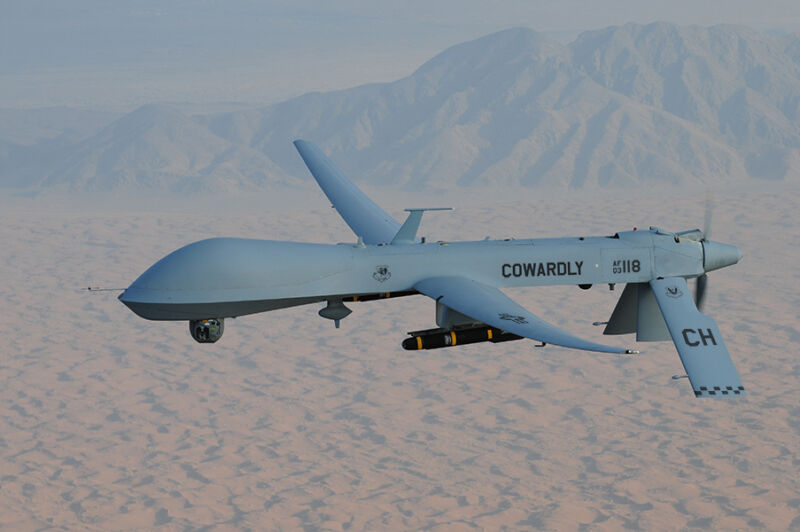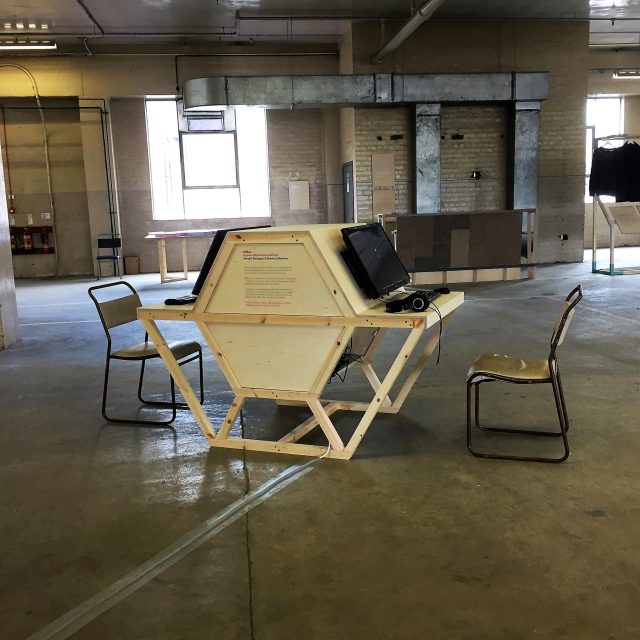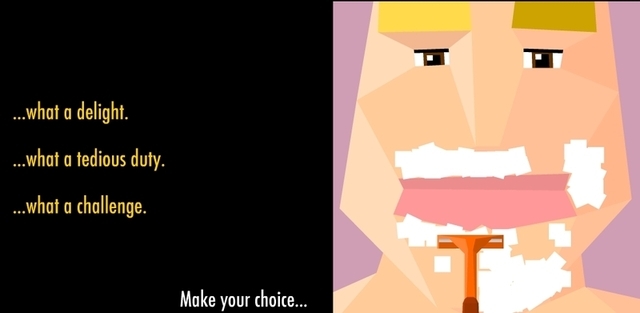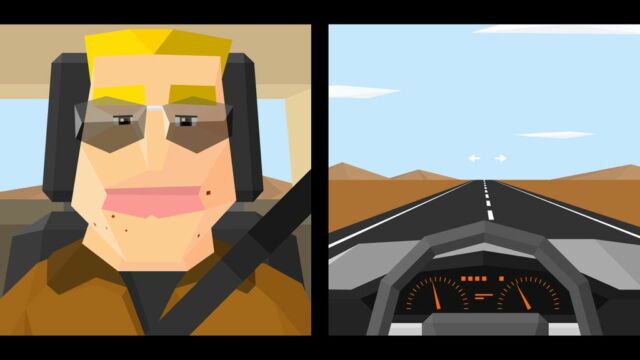
In 1983, President Reagan gave a speech about the role of computers in military preparation and recruiting that seems more relevant than ever nearly 40 years later.
In it, he noted the “incredible hand, eye, and brain coordination” many young people were developing by playing video games, and said the “Air Force believes these [game-playing] kids will be outstanding pilots should they fly our jets.” Reagan also pointed out that the “computerized radar screen in the cockpit is not unlike the computerized video screen,” and that if you “watch a 12-year-old take evasive action and score multiple hits while playing Space Invaders… you will appreciate the skills of tomorrow's pilot.”
What Reagan didn’t know was that some of those kids-turned-pilots would grow up never needing to take evasive action. That is because they’d be flying deadly drone warplanes remotely over villages half a world away. “Right now you're being prepared for tomorrow in many ways, and in ways that many of us who are older cannot fully comprehend,” Reagan said at the conclusion of his speech.
Today, the recent Pentagon drone strike that killed Qasem Soleimani and his entourage at a Baghdad airport is a timely reminder of the power of the push-button force that is dominating military warfare in the 21st century. And its use in military operations only seems likely to increase; as flying legend Chuck Yeager recently told Ars, “It's a good thing any time you can effectively pursue the mission without a pilot bleeding or dying.”
As we learn more about the effects of drone warfare, on both the pilots and the civilians caught in the middle, it seems a good time to examine if the practice is indeed contributing to a “Playstation mentality to killing,” as former United Nations Special Reporter on Extrajudicial Executions Philip Alston warned of in 2010.
The use of video games as a platform for “high art” is as much in its infancy as the use of drones in warfare. And games are illuminating the horror of this new kind of warfare in a unique and modern way. Joseph Delappe’s Killbox (2015) and Palao Pedrici’s Unmanned (2012) both use the interactive format to give players a new appreciation of the issues surrounding drone warfare.
As the gaming industry continues to mature and grow alongside the technology of military drones, these two games give players a fresh perspective on the practice of unmanned killing: one by depicting a drone attack from both the view of the pilot and from the innocent villager on the ground; the other by presenting a portrait of a day-in-the-life of a military drone-pilot.
One day, we may look back on works like these as we currently look on historical meditations on war like Guernica (1937) or All Quiet on the Western Front (1929).
Facing your victim
“It is ongoing, it is growing, and it is horrifying.”
That is how digital media artist Joseph Delappe described the military use of drones. That growing “horror” also explains why he chose to focus his work on drone warfare, starting with the digital imagery of Cowardly Drones in 2013 and installation pieces like Drone Strike Visualization in 2014. Those works eventually culminated in an interactive game, Killbox, in 2015.
“It feels honestly as if what myself and other artists have really tried to caution against has basically all come true, and now it has become everyday and not even really reported that much,” Delappe told Ars Technica regarding drone warfare.
Delappe was riding a bicycle along the perimeter of Nellis and Creech Air Force Bases and Area 51 in 2012 when he was first inspired to turn his eye towards drone warfare. His bike was equipped to draw a chalk outline on that road as part of Project 929, a 420-mile trip which symbolically encircled the 100 square miles that scientists estimate are required for a solar farm that would meet the US’s energy demand.
During the 10-day ride, Delappe had ample time to think about what was going on inside his circle. Creech Air Force Base is where 900 drone pilots - and the physiologists, chaplains and psychologists that service them - go to work every day. It’s the largest staging and training base for drone warfare in the world.

At the time, President Obama was increasing the use of drone strikes, and Delappe thought his next project should focus upon how the actions of the base he was encircling were resonating thousands of miles away.
“I see drones as being cowardly weapons and really questionable, but they also fascinate me [as an example of] ‘the gamification of warfare.’” he said.
Delappe is known by some fellow game artists as the “Godfather” of using games for political activism. One of his first projects focused on the US military was the “interventionist” piece Dead in Iraq (2006-2011). For that project, Delappe entered the online multiplayer US Army recruiting game America’s Army as a soldier he named Dead-In-Iraq.
Delappe’s in-game goal was not to kill, but to be killed. After his character was shot down, Delappe would type the name, age, service branch, and the death date of one the 4,484 service members who had been killed in the Iraqi conflict into the game’s text-based public chat. The project garnered national attention, as well as harsh criticism from gamers.
He ended the project when the US officially announced the end of the conflict in 2011 (though US troops still remain in the country) and moved on to other work. One year after Project 929, he had the opportunity to start work on his first game. Working on sabbatical at the University of Abertay in Scotland, he teamed up with the Biome Collective, a crack team of digital media designers with a vision to make the first realistic version of a game about drone-warfare.
-
Two combatants engaged in deadly combat.
-
Killbox can be played at home and is available for free download from Delappe's website.
-
The villager chases balls while they are targeted by the pilot.
-
The player is free to roam a bucolic scene based on a real farm-village in Pakistan where Democracy Now reported a grandmother and her children were killed in 2005 by an errant drone strike.
Delappe envisioned his game as a two-player asymmetrical first-person shooter, with one player controlling the drone pilot and the other taking a perspective rarely (if ever) seen in a game: that of the innocent villagers on the ground. The idea was to portray the term “collateral damage” in a gaming context.
“How do we depict that?” Delappe asked rhetorically in an interview with Ars Technica. “How do we make that meaningful and interesting? We didn’t want to make something fun. We wanted to make something that would draw people in and have a moment of revealing itself.”
He named the game Killbox, drawn from the term for a “temporary autonomous zone of slaughter" in Grégoire Chamayou’s book Drone Theory.
“You do not want to play the game anymore”
For Killbox, Delappe and the Biome Collective recreated a real farm-village in Pakistan where democracynow.org reported a grandmother and her children were killed in 2005 by an errant drone strike. The villager-player is abstracted in the form of a ball chasing other balls around a bucolic scene. Delappe says he chose balls as opposed to a realistic depiction of local Pakistanis to show a shared humanity, and to help focus players on the universal sound of impending doom represented by an approaching drone.
The two “opponents” face each in the public exhibition of Killbox. For the “shooter,” Delappe and his team recreated what an actual drone pilot would see on their screen from the screenshots they could find online.
Stephan Schwingeler is the co-curator of the exhibition Games and Politics which features Killbox along with work of 16 other political game artists (including Pedercini). After showing the exhibition in over 40 countries over the world over the past two years, Schwingeler has seen a common reaction from patrons playing the game for the first time.
“You engage the first time not knowing what the game is actually about, in a playful, fun behavior, like playing a harmless platform game,” Schwingeler said. “But when the realization hits you that you actually had the connection of the drone strike versus the people on the ground and then you have the shock, [you] realize it. And immediately [you] do not want to play the game anymore.”
“There’s something interesting happening with the medium of the game in this place,” Schwingeler continued. “Because Killbox has a different perspective in that it undermines the whole fun in play. It shows that video games as a medium have potentiality of having serious meaning, a meaning that is far beyond the concept of sheer fun.”
For Delappe, games provide a uniquely relevant way to examine the issues surrounding drone warfare. “I think a game is the appropriate environment to explore what these systems are like and to show the nature of how we use these weapons. And the design of those systems are very similar to gaming controls that young people use. It is a very strange place we are at and I suspect it is the tip of the iceberg as well.”
Killing is my day job
While Killbox takes an action-oriented focus on the disconnected nature of drone warfare, Paolo Pedercini’s Unmanned focuses instead on the troubling effects the job could have on a pilot.
Unmanned combines text-based multiple choice decisions on what to do or say with a handful of mini-games representing the difficulties a drone pilot might encounter amid the mundanity of day-to-day life. The activities in these mini-games range from shaving to driving to struggling through nightmares in your sleep. Perhaps most poignantly, you also have to play a war-based videogame-within-a-game with your son at home after a hard day at work. The rudimentary gameplay is overshadowed by a humanistic narrative that’s rarely found in games.
“One thing is that the game was very speculative at that point,” Pedercini, a critically acclaimed veteran in game activism, told Ars. He had been producing similarly provocative games for a decade under the name Molleindustria, and he was recently recognized as one of the best “game changers” in 2018 by The Guardian.
“When it came out there [were] not very many outlets that were talking about drone warfare,” he said. “There were a couple of books, but not too much. There also was no direct primary source from drone pilots themselves when we made it”.”
“There’s been a lot of work since that has explored the daily work of drone pilots, but at the time, there were still a lot of unconsidered questions,” said graphic novelist and gaming impresario Jim Munro, who co-wrote the dialogue in Unmanned. “How does the drone pilot justify what they do? What moral framework do they use? All of those things are something you step through when you go through the game.”
With more drone pilots going into retirement and speaking and writing about their experience, we can finally see just how accurate Unmanned’s depiction was. You can see similar situations depicted in Ethan Hawke’s 2014 film Good Kill, and reported on in Eyal Press’ seminal New York Times 2018 article “The Wounds of the Drone Warrior.”
“We thought: Let’s imagine what that extreme secretive life is,” Pedercini said. “And now we can actually see how it is, and we got it pretty right. We were imagining a post traumatic stress disorder of a kind in the game in 2012 and it turns out that’s a thing among actual drone pilots.”
Art curator Beryl Pong is the Principal Investigator (Curator) of The Aesthetics of Drone Warfare, an upcoming exhibition and conference at the University of Sheffield, England, that aims to bring together artists, academics, and the general public into conversation about drone warfare and art (Delappe will be a keynote speaker at the February event). And she’s one of many in the art world that see gaming as an important, expressive, and modern method to examine drone warfare.
“Joseph Delappe’s Killbox is about how disconnected drone warfare can be—the import of what’s happening is obscured by the long ‘kill chain’ of image analysts, jet fighter pilots, ground troops, drone operators, and so on,” Pong told Ars. “[But] Unmanned insists on the human presence undergirding it all: the biases, desires, and distractions that don’t have anything to do with operating drones, but that do, because of the asymmetry of the power dynamics and because there is still someone pushing the button.”

Schwingeler, who also selected Unmanned for his Games and Politics exhibition, agreed: “The protagonist is pushing the buttons and becoming the most powerful man in this moment because he’s able to kill a whole village, but he’s powerless in his personal life,” he said.
“The player is always out of control in this game. It is a key element in the game that you cannot control the game in the way you want to. It is very interesting if you’re thinking of the nature of video games themselves because [playing] video games always means being in control of the medium itself.”
Pedercini believes that drone warfare is similar to video games in that they both deliver the promise of a safe kind of violence. “In a certain way in games you are dehumanizing the enemy, turning them into a puppet without feelings. Normal warfare is not as exciting or as clear or as clean to what you see in mainstream video games.”
https://news.google.com/__i/rss/rd/articles/CBMicGh0dHBzOi8vYXJzdGVjaG5pY2EuY29tL2dhbWluZy8yMDIwLzAyL3B1c2gtYnV0dG9uLXdhcmZhcmUtaG93LWFydGlzdHMtdXNlLWdhbWVzLXRvLWNhcHR1cmUtZHJvbmUtc3RyaWtlLWhvcnJvci_SAXZodHRwczovL2Fyc3RlY2huaWNhLmNvbS9nYW1pbmcvMjAyMC8wMi9wdXNoLWJ1dHRvbi13YXJmYXJlLWhvdy1hcnRpc3RzLXVzZS1nYW1lcy10by1jYXB0dXJlLWRyb25lLXN0cmlrZS1ob3Jyb3IvP2FtcD0x?oc=5
2020-02-25 12:30:00Z
CBMicGh0dHBzOi8vYXJzdGVjaG5pY2EuY29tL2dhbWluZy8yMDIwLzAyL3B1c2gtYnV0dG9uLXdhcmZhcmUtaG93LWFydGlzdHMtdXNlLWdhbWVzLXRvLWNhcHR1cmUtZHJvbmUtc3RyaWtlLWhvcnJvci_SAXZodHRwczovL2Fyc3RlY2huaWNhLmNvbS9nYW1pbmcvMjAyMC8wMi9wdXNoLWJ1dHRvbi13YXJmYXJlLWhvdy1hcnRpc3RzLXVzZS1nYW1lcy10by1jYXB0dXJlLWRyb25lLXN0cmlrZS1ob3Jyb3IvP2FtcD0x
Bagikan Berita Ini














0 Response to "Push-button warfare: How artists use games to capture drone strike horror - Ars Technica"
Post a Comment